7 Strategies For Your Shopify Furniture Store
Furniture ecommerce comes with a series of challenges for retailers to navigate. This article draws on our expertise in this sector to recommend best practices for overcoming common barriers to purchase, empowering shoppers to make informed buying decisions, and driving online sales.
Written By
Hannah Smiddy
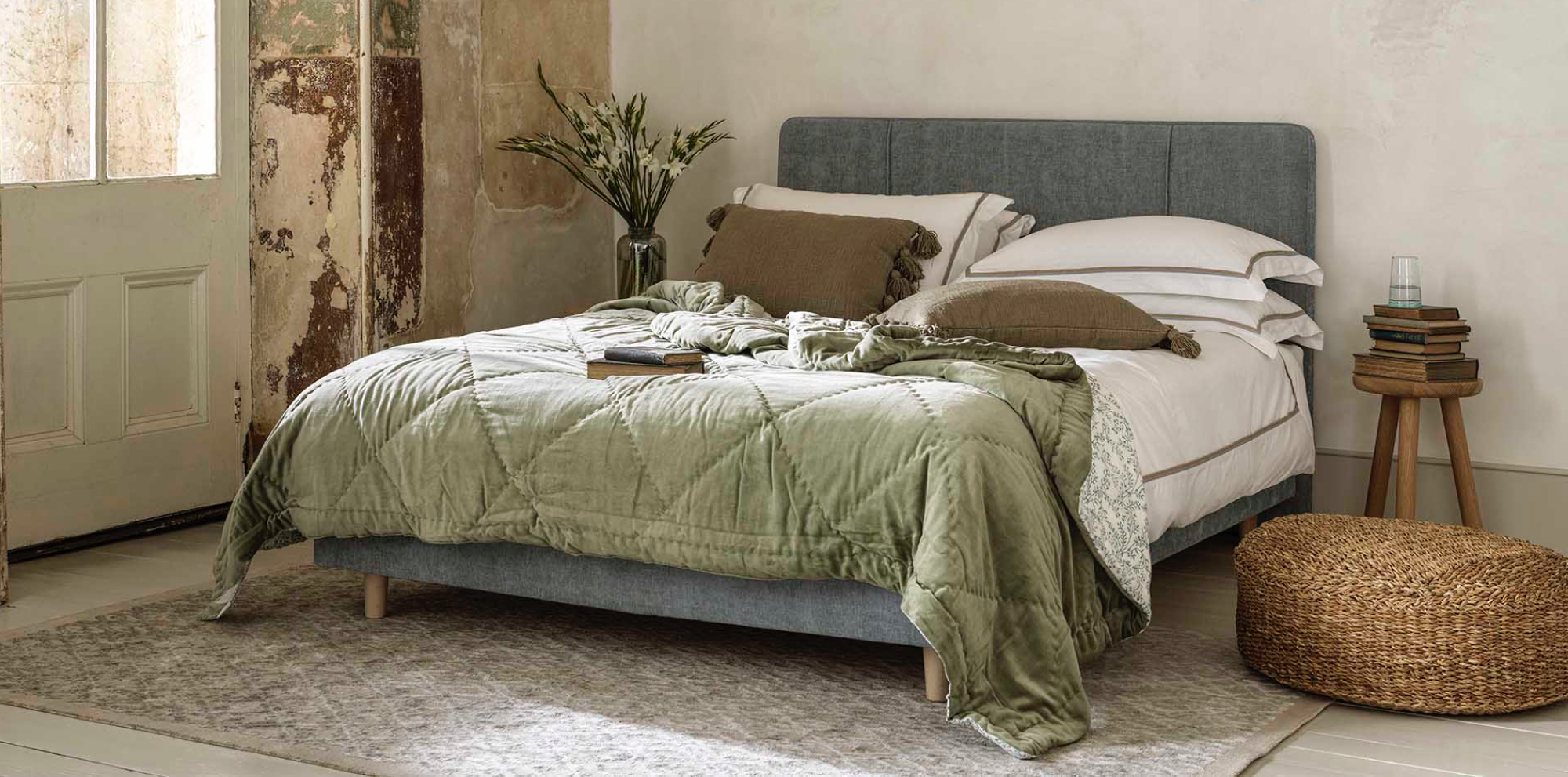
Furniture retail has long been associated with tactile visits to brick-and-mortar stores. However, when the Covid pandemic hit, weekend showroom strolls were swiftly replaced with Google searches and website scrolls. Changes in consumer behaviour during this period forced furniture brands to think carefully about the digital experiences they were serving up to online shoppers.
According to a report by Shopify, sales in the home furnishings ecommerce industry peaked at USD $133 billion in 2021, claiming a 17% share of the total online retail market. Since then, despite these numbers dipping slightly, ecommerce is now firmly integrated in the discovery and purchasing process for furniture shoppers.
As retailers look to create hybrid commerce journeys that blend digital and in-store experiences, they need to successfully navigate a number of challenges unique to the furniture industry.
For one, high-ticket furniture items typically require careful consideration. Shoppers will likely have a checklist of questions in mind when weighing up a product’s suitability. Will it serve its purpose? How will the piece complement existing furniture items? Will it stand the test of time?
This, combined with concerns around shipping, assembly, and complex and costly returns, can increase perceived risk. Any cautiousness and uncertainty is typically exacerbated when shopping online.
With these challenges in mind, this article will focus on seven strategies for your Shopify furniture store that will help to aid product visualisation, empower shoppers to make informed purchasing decisions, and reduce the likelihood of returns needing to be made. We will draw on our experience designing and building digital solutions in the home and garden ecommerce sector, as well as use examples from furniture brands thriving on Shopify.
Best practice for your furniture ecommerce site
1. Streamline product discovery with navigation & filtering
Online furniture shoppers will often have a vision in their head of the type of item they’re looking for. Whether it’s a round wooden coffee table or a blue velvet accent chair they’re after, these high-intent users will appreciate an ecommerce site with a clear, intuitive navigation and filtering system – one that enables them to sort by their coveted attributes.
It’s important to structure your online store’s menu so that users can navigate seamlessly to the most relevant collection page for their needs. Here are some ideas as you look to achieve this:
- Group products by type (e.g. beds, dressers, ottomans, dining tables).
- Sort products by room (e.g. bedroom, dining room, kitchen).
- Allow shoppers to explore your inventory by theme or style (e.g. contemporary, floral, rustic).
- Structure your products by material (e.g. wooden coffee tables, glass coffee tables).
Shopify Plus furniture retailer Snug groups sofas by type within its mega menu, with product images leveraged to provide extra clarity for consumers.
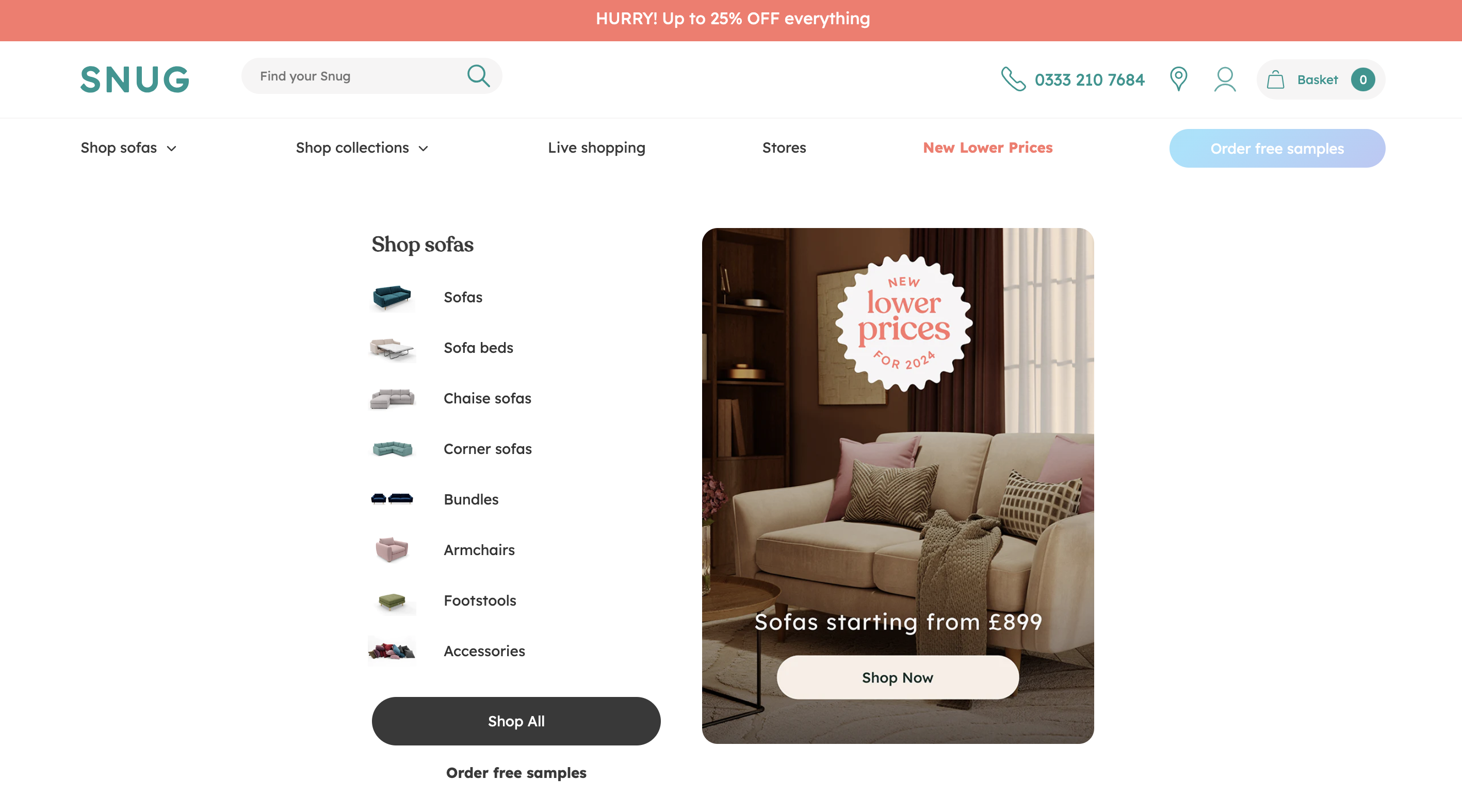
Of course, the way you structure your navigation system, and the categories and subcategories you use, will depend on the types of furniture products you sell. Ultimately, your menu should categorise your products logically and help direct users to relevant products quickly and easily.
On collection pages, allow users to filter products via key characteristics such as height, width, colour, material, assembly and price. Visual cues like colour swatches and icons can make the filtering process more intuitive and engaging.
Snug does exactly this on its collection pages, making it simple for shoppers to narrow down products based on key criteria.
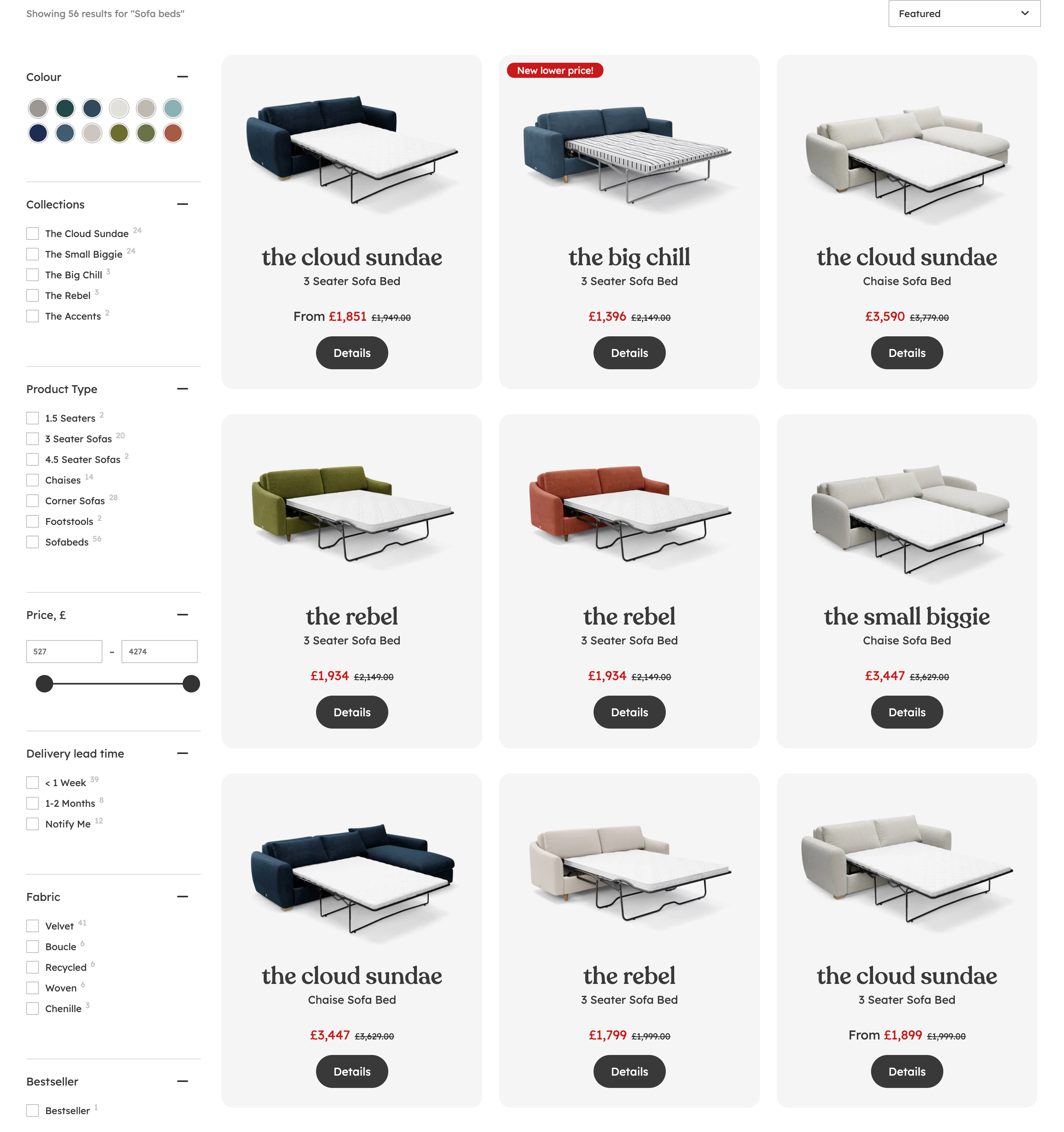
2. Make key information digestible on your product pages
Online shoppers rely heavily on product pages (or PDPs) when making a purchasing decision. They expect to find clear and accurate details about a product and its variants. A PDP should be supplemented with elements such as high-quality product photography, shipping information, and authentic product reviews.
In furniture ecommerce, there’s often a lot of information to communicate with shoppers on product pages, including key details like dimensions, materials, features, assembly instructions and colour options. Your goal is to convey all of this important information to consumers with clarity – without increasing their cognitive load and risking them bouncing from your store.
We recently navigated this challenge when migrating bed and mattress brand Naturalmat from Magento to Shopify. Our aim when designing the new product pages was to simplify the existing user journey and avoid overwhelming customers with too much information. In doing this, we still needed to ensure that shoppers had access to the right information.
One way we achieved this balance was by using illustrations to emphasise key product features and make them more digestible.

We also trimmed down lengthy USP descriptions and opted for the use of keywords to be more impactful. The USP banner shown below communicates four key aspects of a Naturalmat mattress, without relying on a wall of text and overwhelming website users.
![]()
Another tactic was to leverage accordions to house information about delivery and the brand’s ‘45 Day Sleep Promise’. These details remain easily accessible for users, but are neatly tucked away to create a tidier, simplified product page.
3. Create a sense of desire with lifestyle imagery
Featuring well-curated photos of your products in situ is crucial for online furniture retailers. Just some of the benefits of lifestyle imagery in this industry include:
- helping customers understand critical aspects such as furniture size, scale, and colour coordination – thus aiding purchase decisions;
- demonstrating how furniture can elevate a space – serving as aspirational content that creates a sense of desire;
- conveying values about your brand and helping with storytelling – thereby establishing deeper emotional connections with consumers; and
- setting your brand apart from its competitors – showcasing your unique style.
Returning to our project with Naturalmat as an example, lifestyle visuals played a central role when we designed the brand’s Shopify store. We leveraged Naturalmat’s exquisite lifestyle image catalogue to captivate store visitors and support visual storytelling.
By giving these photos plenty of real estate on the site, they evoke feelings of desire and invite shoppers to imagine themselves relaxing in one of Naturalmat’s beds.
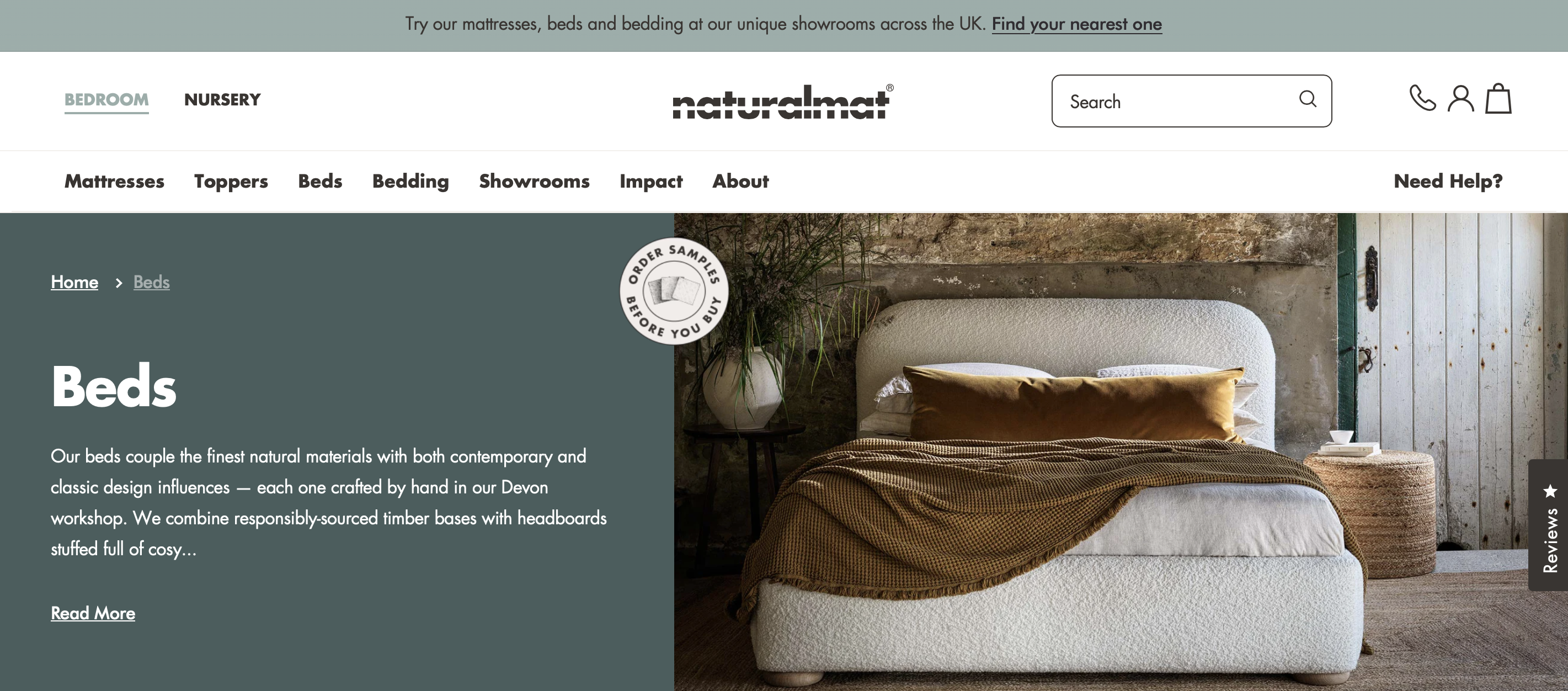
Fellow Shopify furniture brand En Gold displays stunning lifestyle images on its product pages via a ‘Styled on Instagram’ section. These beautifully curated photographs serve as further interior inspiration for consumers and highlight the versatility of the company’s products.

4. Aid custom product visualisation with configurators
If your brand sells custom furniture items, utilising a responsive product configurator is a great way to provide an immersive online experience for shoppers. Actively involving users in the design process with interactive on-site functionality draws them into your brand, nurturing meaningful brand-consumer connections, whilst increasing time spent on your site.
What’s more, by allowing a user to visualise the exact product they’re building, you can help them feel more confident in their purchase. This can help to positively impact conversion rate, as well as reduce return rates.
We discuss more benefits of product configurators in this article about selling personalised products on Shopify.
Swanky’s development team crafted a bespoke product configurator that provides a fast and intuitive product customisation experience for customers building office furniture on the Aeris website. The example below walks through the configuration of an ‘Active Desk’.
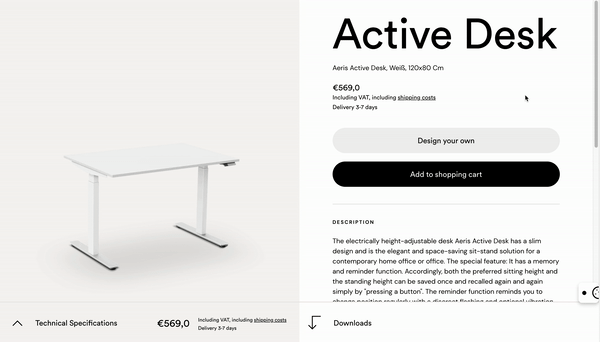
Users can select between thousands of variants – choosing between different surfaces, colours, sizes and frames – and instantly see an image response based on their selection. Accurate pricing and shipping details are also presented, in line with the product currently configured.
You can read more about this product configurator in our case study about the custom development work we completed for Aeris.
Similarly, our Shopify experts in Australia developed a custom product builder for homeware ecommerce brand Veneta Blinds. Under the hood, this solution expertly handles the complex pricing requirements that come with the brand’s made-to-measure products and the billions of possible variants.
Meanwhile, on the frontend, users can walk through an interactive, step-by-step process to select each feature of their bespoke window coverings. This makes for an intuitive product configuration experience that simplifies the journey to checkout.
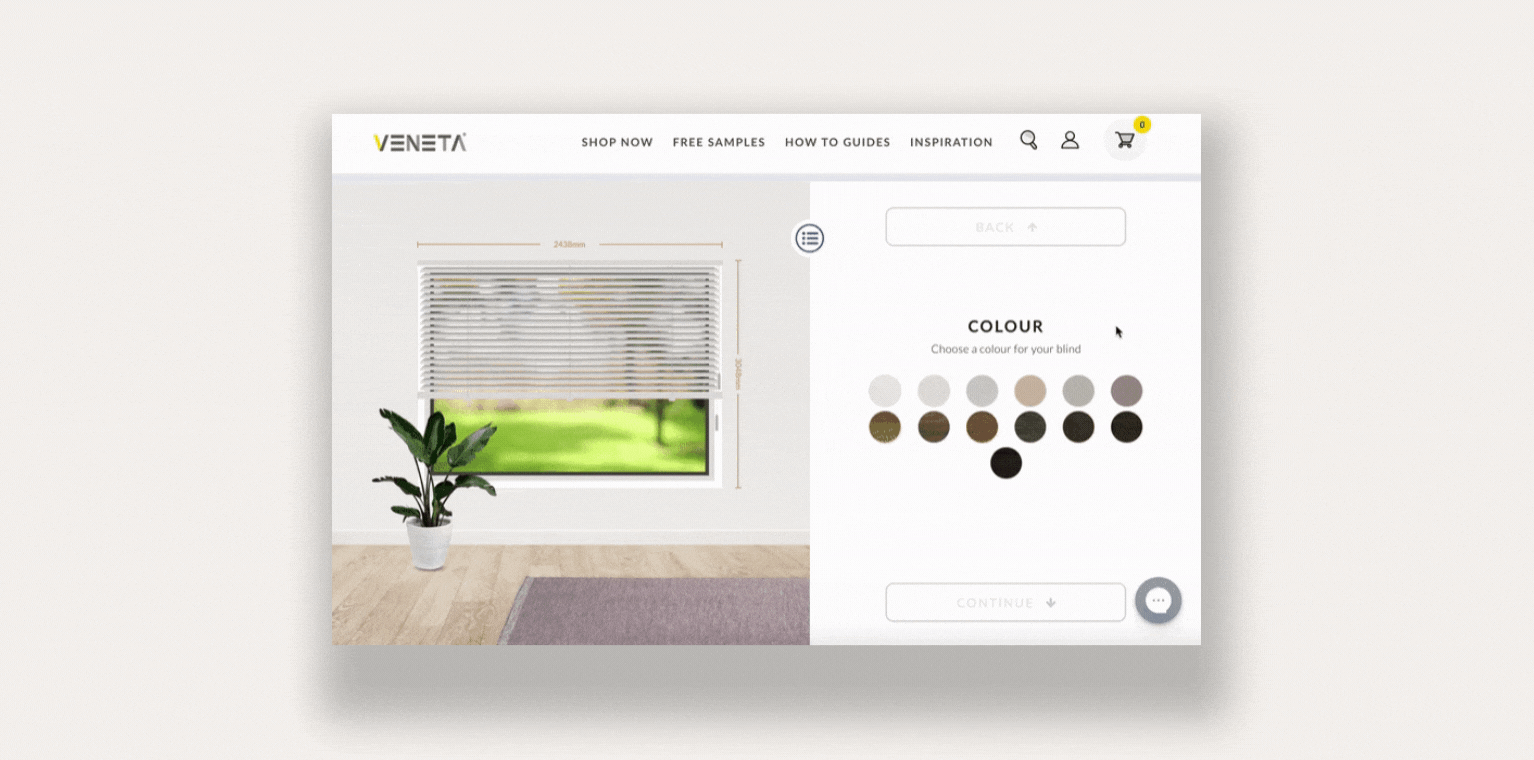
Learn more about this functionality and its complexity in our case study about Veneta Blinds’ bespoke product builder.
5. Provide an immersive experience with AR & VR
Taking visualisation a step further, technologies like augmented reality (AR) and virtual reality (VR) are becoming increasingly popular amongst online retailers thanks to their ability to enhance the customer experience and mitigate against common barriers to purchase. In fact, an AR study by Shopify revealed that consumers were 65% more likely to place an order after interacting with a product in AR.1
In terms of furniture ecommerce, these technologies allow shoppers to visualise how an item of furniture will look in the context of their home, alongside their existing homeware pieces. This provides a more accurate sense of scale, style and suitability, empowering consumers to make more informed purchasing decisions. This increases satisfaction upon delivery and reduces the likelihood of items needing to be returned.
Interactive AR and VR functionality can also foster more meaningful brand-consumer connections by providing fun and memorable shopping experiences – which is important for nurturing loyalty early on in the customer journey.
What’s more, leveraging these technologies on your furniture ecommerce website demonstrates a commitment from your brand to providing superior customer experiences and staying on top of online retail trends. This shows consumers that you value their needs and can help to further your reputation as a trusted, customer-centric brand.
For furniture retailers using Shopify, the platform’s built-in AR feature is helping to bridge the gap between physical and digital commerce. Shopify AR enables consumers to explore 3D models of products, examining them from all angles before committing to a purchase decision.
It’s worth noting that as well as gaining popularity with furniture retailers, AR is also proving a hit with customers, with 94% of Gen Z, 92% of millennials, 87% of Gen X and 75% of baby boomers reporting interest in seeing AR simulations of furniture in their homes.2
6. Recreate showroom interactions with virtual consultations
For customers that are shopping online for significant furniture purchases like sofas or beds, some sort of personalised engagement with a store consultant can be useful to ensure they are making an informed purchasing decision.
Offering complimentary virtual consultations can be a great way to provide shoppers with expert advice, guiding their path to checkout. These sessions typically involve listening to shoppers’ needs, recommending relevant products and answering any questions they may have about the product or its delivery.
Naturalmat offers online consultations like this – demonstrating the brand’s commitment to providing a personalised and consultative approach across channels. Swanky implemented a built-in scheduling feature onto the brand’s Shopify Plus store to facilitate this, powered by Calendly.
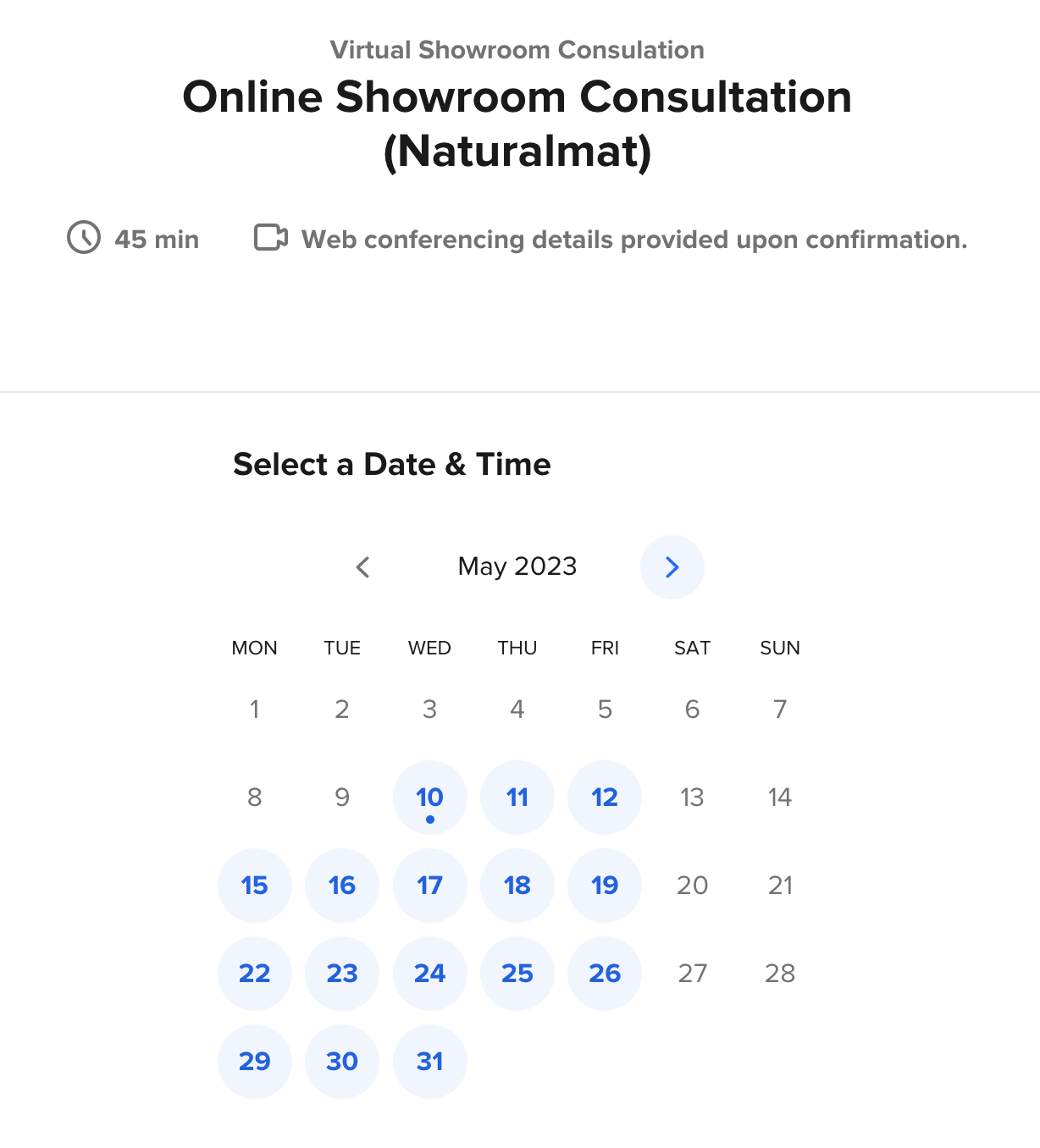
Essentially, these consultations echo the experience of having a sales assistant or stylist provide guidance in a brick-and-mortar showroom. They are another way to close the gap between physical and digital retail, reducing hesitation amongst shoppers and boosting conversion rates.
Taking this personalised service a step further, luxury furniture brand Maiden Home offers free design and styling advice. Shoppers submit images of the space they want to furnish and receive tailored design plans from a member of the Maiden Home team. This can include creation of mood boards, to-scale floor plans and product recommendations. Further guidance is provided via email and phone, walking consumers through furniture selection and placement.
7. Leverage visual user generated content to showcase versatility & build trust
Visual user generated content (UGC) can be extremely valuable for furniture ecommerce retailers to leverage. A powerful form of social proof, here are just a few of its benefits to keep in mind:
- Photos showcasing the same item of furniture in various real-life environments will help to communicate its versatility – much more than a product description could.
- Seeing how a piece of furniture looks in a space with the same colour palette as a customer’s house can give them the nudge they need to click the Buy button.
- By showing how other customers have styled your furniture in their homes, UGC inspires creativity and encourages exploration of new design ideas.
- As on any ecommerce store, a collection of authentic UGC indicates brand credibility – thereby building trust amongst consumers and encouraging conversions.
- UGC will add fresh and relevant content to your furniture website, which can enhance search engine visibility and help to drive organic traffic.
With these benefits in mind, it’s important to carefully consider the placement of visual UGC on your furniture store, weaving it across key touch points for maximum effect.
Priority areas to consider showcasing UGC include your homepage, product pages and blog – but we’d recommend A/B testing different placements to see which resonates best with your website visitors.
Furniture and interiors brand Lulu and Georgia showcases UGC via a shoppable Instagram feed on its homepage.

Meanwhile, previous Swanky client Olivia’s has a Lookbook dedicated to visual UGC, serving as a source of inspiration for furniture shoppers.
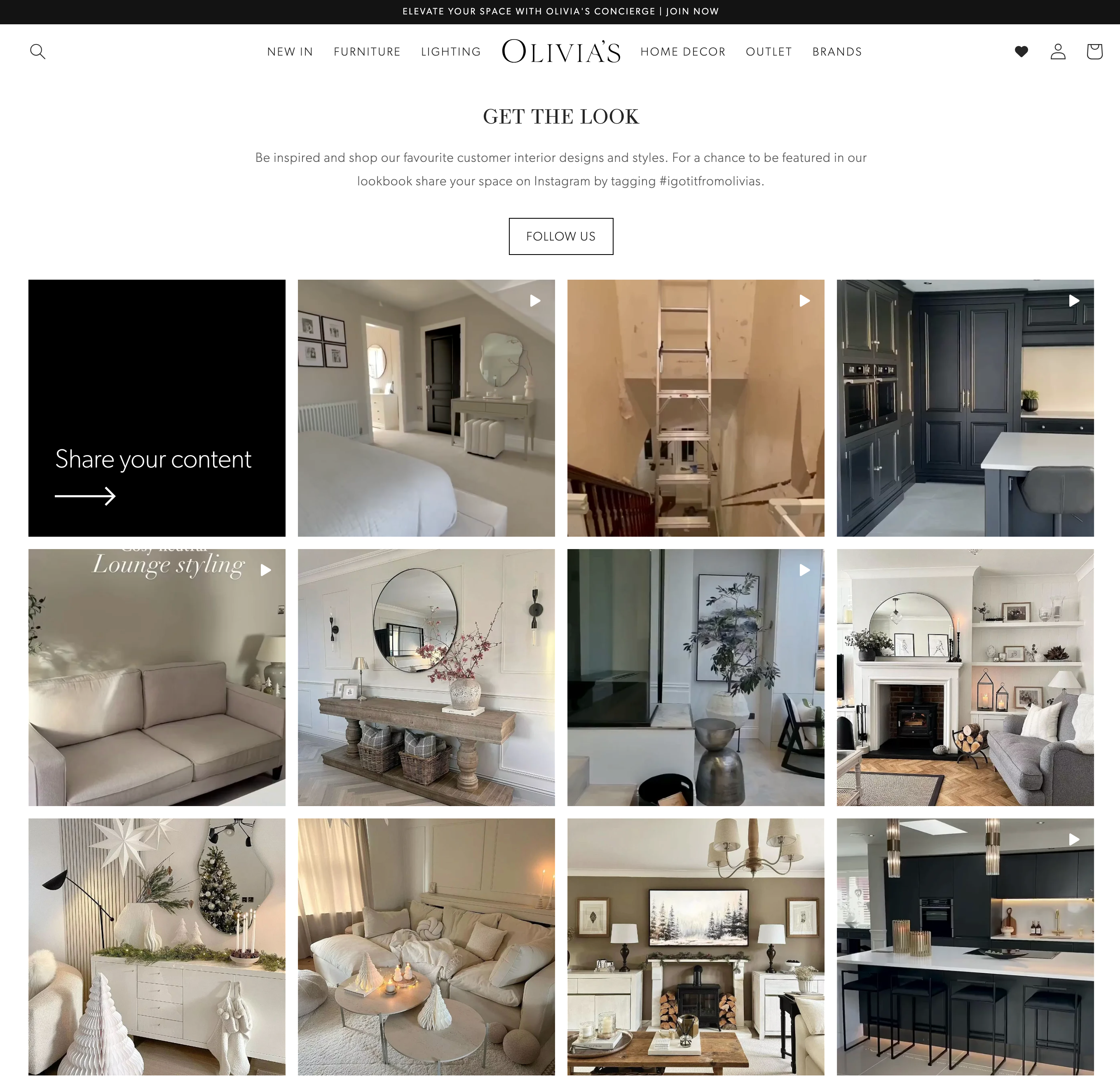
Looking for an agency to build you a stylish Shopify furniture store?
With an international portfolio of clients in the homewares and furniture industry – including the likes of Naturalmat, Aeris, Fishpools, Olivia’s and Veneta Blinds – we know what it takes to create beautiful and compelling ecommerce solutions for brands in this sector.
We can replatform your furniture ecommerce store to Shopify, consult on other best-in-breed technologies to add to your ecommerce stack, and then grow your business with a flexible monthly retainer.
Get in touch with our solutions team to find out how we can help transform your furniture brand.
For reference:
[1] https://www.shopify.com/partners/blog/ar-ecommerce
[2] https://www.statista.com/statistics/1308187/augmented-reality-interest-shopping-generation/

